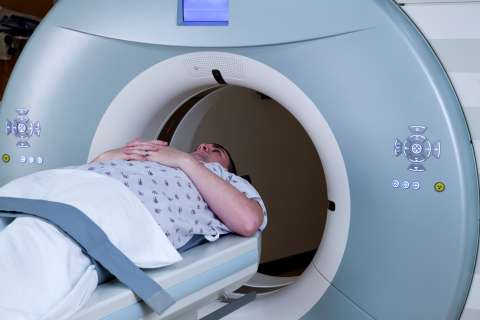A new UCLA-led study has identified multiple new risk genes for Alzheimer’s disease and a rare, related brain disorder called progressive supranuclear palsy (PSP) by using a combination of new testing methods allowing for mass screening of genetic variants in a single experiment.
The study, published today in the journal Science, also presents a revised, new model showing how common genetic variants, while individually having a very small impact on disease, collectively may raise the risk of disease by disrupting specific transcriptional programs across the genome.
Typically, researchers have relied on genome-wide association studies (GWAS) in which they survey the genomes of a large group of people to identify genetic variants that increase risk for the disease. This is done by testing for markers along the chromosome, or loci, associated with a disease. Each locus on average has dozens – and sometimes hundreds or thousands – of genetic markers in common that are co-inherited and therefore associated with the disease, making it difficult to identify which are actually the functional variants that cause disease.
Identifying the causal variants and the genes they impact is a major challenge in modern genetics and biomedicine. This study provides an efficient roadmap for tackling this problem.
For this this study, the authors conducted one of the first known uses of high-throughput testing to study neurodegenerative disease. The authors ran massively parallel reporter assays (MPRAs) to simultaneously test 5,706 genetic variants in 25 loci associated with Alzheimer’s and nine loci associated with PSP, a neurological disease that is much rarer than Alzheimer’s but has a similar pathology.
From that test, the authors with high confidence were able to identify 320 genetic variants that were functional. To validate the results, they ran a pooled CRISPR screen on 42 of those high-confidence variants in multiple cell types.
“We combined multiple advances that allow one to conduct high-throughput biology, in which instead of doing one experiment at a time, one does thousands of experiments in parallel in a kind of pooled format. This allows us approach this challenge of how to move from thousands of genetic variants associated with a disease to identifying which are functional and which genes they impact,” said Dr. Dan Geschwind, the study’s corresponding author and the Gordon and Virginia MacDonald Distinguished Professor of Human Genetics, Neurology and Psychiatry at UCLA.
Their data provided evidence implicating several new risk genes for Alzheimer’s, including C4A, PVRL2 and APOC1, and other new risk genes for PSP (PLEKHM1 and KANSL1). The authors were also able to validate several previously identified risk loci. The next steps would be studying how newly identified risk genes interact in cells and model systems, Geschwind said.
The study provides proof of principle that high-throughput testing can provide a “very efficient” roadmap for further research, Geschwind said, but he stressed that those approaches must be thoughtfully paired with more targeted experiments, as they were in this study.
“This success does not mean that we can jettison the kind of detailed, careful experimentation studying individual genes in model systems,” he said. “This just provides a key step between the GWAS and understanding disease mechanisms.”
Yonatan Cooper, the study’s lead author, said the combination of approaches the researchers took gave them greater confidence in their findings, while it also highlighted the challenge inherent to interpreting human genetic variation.
“We believe that integration of multiple methodologies will be critical for future work annotating disease-relevant variation in both the research and clinical domains,” said Cooper, who is a MD/PhD candidate in the Medical Scientist Training Program at UCLA’s David Geffen School of Medicine.
The authors were also able to show in PSP at least one mechanism in which multiple loci associated with the disease acted additively to disrupt a core set of transcription factors, which essentially turn genes on and off, that are known to work together in specific cell types. Geschwind said this indicated that common genetic variation located across the genome was affecting specific regulatory networks in specific cell types. That finding, he said, identifies new potential drug targets and suggests that rather than targeting one gene, targeting a network of genes could be an effective approach.
“We’re entering in a new stage of therapies – it’s beginning to be plausible to think about targeting networks,” Geschwind said.
The study’s other authors are Noam Teyssier, Nina M. Dräger, Qiuyu Guo, Jessica E. Davis, Sydney M. Sattler, Zhongan Yang, Abdulsamie Patel, Sarah Wu, Sriram Kosuri, Giovanni Coppola and Martin Kampmann.
The study was supported by funding from the National Institute of Aging Fellowship 1F30AG064832, UCLA-Caltech MSTP training grant T32- GM008042, National Institute of Neurological Disorders and Stroke grants 5UG3NS104095-04 and U54 NS123746, and Rainwater Charitable Foundation grants 20180629 and A130323.
Several authors declared competing interests. Kosuri is an employee of and holds equity in Octant, Inc. Kampmann holds equity in and serves on the scientific advisory boards of Engine Biosciences, Casma Therapeutics, Cajal Neuroscience and Alector and advises Modulo Bio and Recursion Therapeutics. Kampmann is also an inventor on US patent 11,354,933 related to CRISPRi and CRISPRa screening. Coppola is now a full-time employee of Regeneron Pharmaceuticals and has received stock and stock options from Regeneron Pharmaceuticals.




